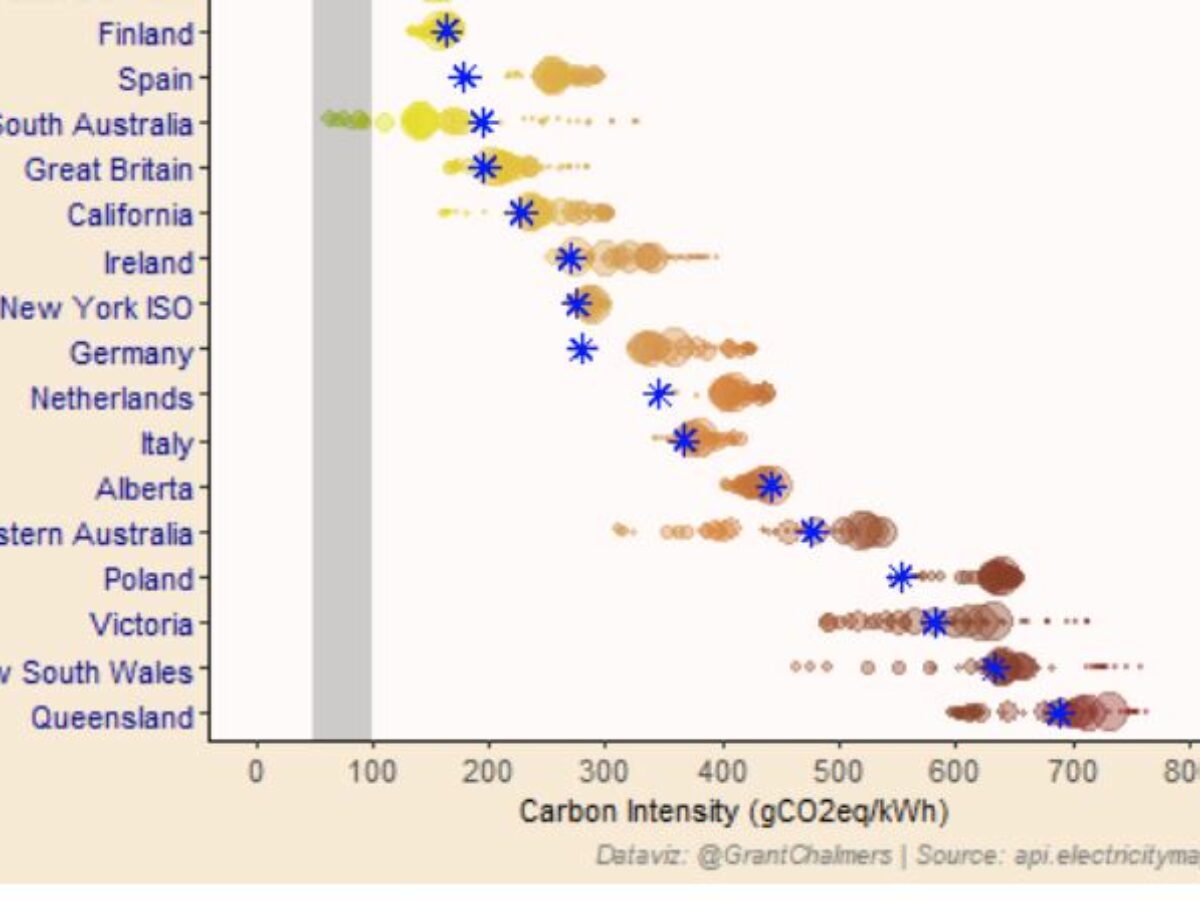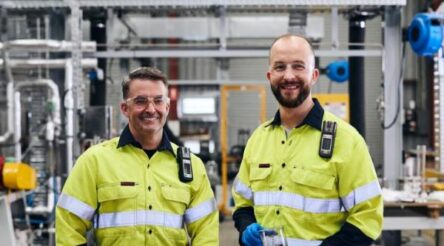Graphic proof of Australia’s dirty electricity (Tassie and SA excluded)

By Peter Roberts
The news this week that Origin Energy is seeking approval to shut Australia’s largest coal-fired power plant seven years early, is just the beginning of what should be a rapid phase out of coal power in Australia.
The Eraring station in the NSW Hunter region and the largest of 16 remaining coal-fired power plants supplying the National Energy Market (NEM) will now close by August 2025.
As this graphic produced by Grant Chalmers, senior functional analyst at the University of Queensland shows, these power stations make Australia’s eastern states especially among the dirtiest and most damaging to the planet in the world.
The carbon intensity of generation of electricity in Western Australia, Victoria, New South Wales and Queensland is by far the highest of any of the jurisdictions measured. The coloured blobs represent intensity at different times of the day.
Tasmania by contrast comers out on top as the cleanest in the world, while South Australia leads the way among coal states in its transition to clean renewables.
But as the graphic shows the problem in the west and the east remains huge – electricity generated from coal supplies 60 per cent of power in the NEM, down from 87 per cent in 2006.
Seven of our existing power stations are scheduled to close by 2035 with the last remaining open as late as 2051.
We have just got to accelerate the closure of these stations.
The urgency of the planetary challenge was made clear this week with a new prediction from NASA that sea levels are going to rise by 12 inches by 2050.
Such a rise rise would inundate huge and valuable areas of our coastal capital cities.
Perhaps there will be a change of government at the upcoming federal election that will take the transition to renewables seriously.
That the present government does not was underlined by energy minister Angus Taylor’s response to the closure of Erarang – he described it as a ‘bitter disappointment’.
Under Taylor and his colleagues we have been fed a series of lies leading to a lost decade where we could have planned for transition – as South Australia has done – simultaneously fostering the industries we will need if we are to hope to become energy self sufficient.
Instead today we are still one of the world’s heaviest polluters, and are barely involved in the manufacture of Solar PV and wind power generation equipment.
And it is the private sector and the states that are leading the way in developing a green hydrogen export sector to replace today’s LNG exports.
It fell to Greens leader Adam Bandt – the leader of a party constantly derided by this federal government – to say bit like it really is: “We urgently need a national climate and energy plan to manage this accelerating shift from coal.”
Image: Grant Chalmers
Subscribe to our free @AuManufacturing newsletter here.
@aumanufacturing Sections
Analysis and Commentary Awards Defence Manufacturing News Podcast Technology Videos











